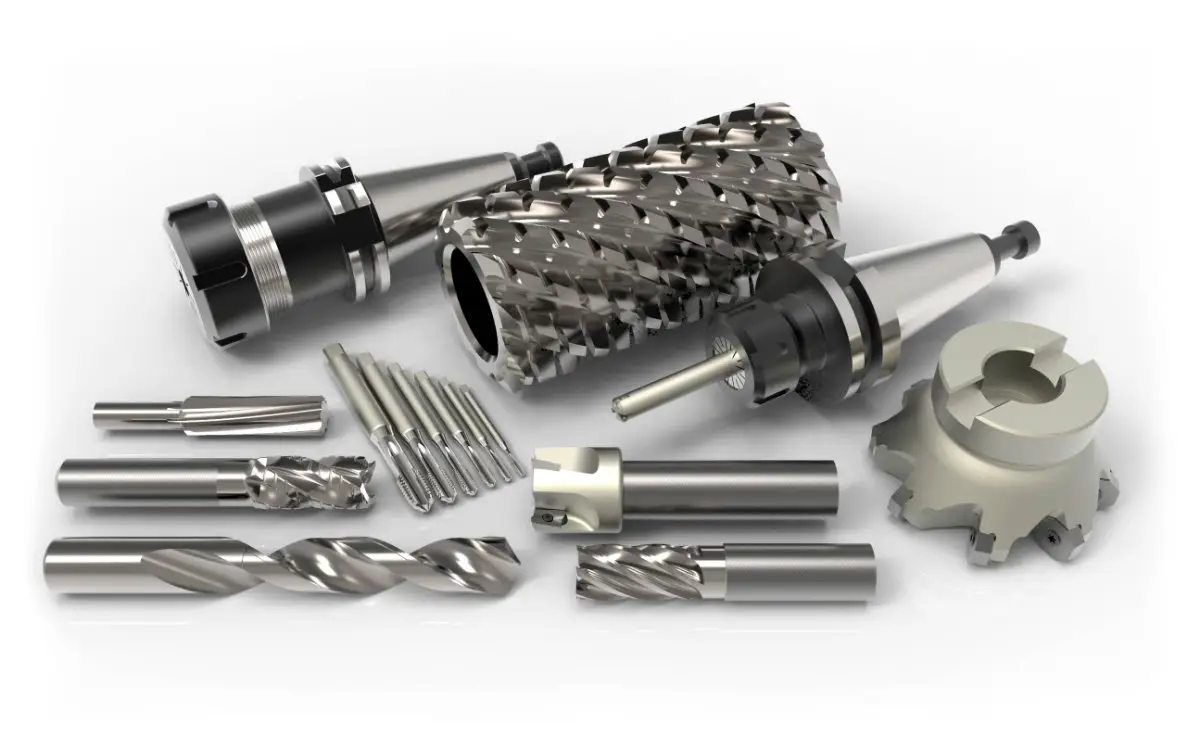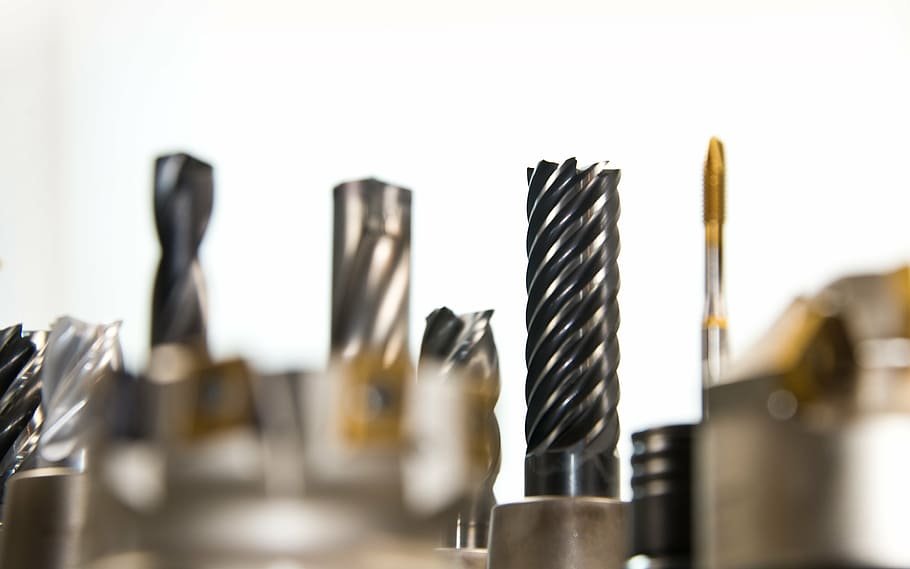In the world of CNC metal machining, selecting the correct tooling is critical for achieving the highest levels of precision, efficiency, and cost-effectiveness. The versatility of CNC machines stems from their ability to use a wide range of cutting, milling, drilling, and turning tools, each tailored for specific operations. The wrong tooling selection can result in poor quality, increased tool wear, and high manufacturing costs, while the right choice will maximize productivity and deliver excellent surface finishes.
At CNCRUSH, we have been offering professional CNC machining services for over 12 years, specializing in CNC Milled parts and CNC Turned parts for industries such as automotive, machine building, and automation. Our deep experience and focus on precision CNC machining make us a trusted partner for clients across the globe.

1. Importance of CNC Metal Machining Tool Selection
Selecting the right CNC machining tools is essential because they significantly impact the performance, speed, and precision of machining processes. The goal is to ensure that the selected tools match the material, geometry, and desired outcome for your project. Failure to choose the correct tool leads to reduced accuracy, poor surface finishes, and increased downtime due to frequent tool changes or wear.
At CNCRUSH, our CNC machining services are optimized to ensure that we use the most appropriate tools for the job, ensuring that our CNC Milled parts and CNC Turned parts meet or exceed client expectations in industries like automotive and machine building.
2. Key Considerations for CNC Tool Selection
Choosing the right tool requires a deep understanding of the material being machined, the tool’s geometry, the coating, and the cutting environment. Below are some key considerations that guide the selection process:
A. Workpiece Material
The properties of the material being machined directly influence the type of tool selected. For example:
- Aluminum and brass: Require high-speed tools with sharp edges to achieve smooth finishes.
- Steel and titanium: Need tougher, wear-resistant tools, such as those made from carbide or ceramic.
- Plastics: Typically machined with softer, high-speed steel tools to avoid material deformation due to excessive heat.
At CNCRUSH, we machine a wide range of materials, including aluminum, steel, and brass, tailoring our tool selection to ensure the best quality outcomes for CNC Metal Machining and other materials.
B. Tool Geometry
Tool geometry—such as rake angle, helix angle, and flute count—plays a critical role in determining the effectiveness of the tool for different operations.
- Rake angle: A positive rake angle reduces cutting forces, while a negative rake angle increases tool strength for harder materials.
- Flutes: More flutes offer higher feed rates but can clog more easily when machining softer materials.
For CNC Milled parts, selecting the correct end mill geometry ensures precision in features such as pockets, slots, and fillets, which are crucial for industries like automotive and automation.
3. Tool Types for CNC Metal Machining
A. CNC Milling Tools
Milling tools are essential for material removal during CNC Metal Machining. Common types include:
- End mills: Available in flat, ball-nose, and bull-nose variations, end mills are versatile and used for everything from roughing to finishing operations.
- Face mills: These are used to machine flat surfaces and have replaceable cutting inserts that improve durability and reduce costs.
- Slotting cutters: Designed for cutting grooves, these tools provide clean, accurate slots for various applications.
At CNCRUSH, we use advanced CNC milling tools to ensure high-quality finishes and dimensional accuracy in all CNC Metal Machining parts.
B. CNC Turning Tools
Turning tools are used to machine rotating parts, making them essential for CNC Turned parts. These include:
- Chamfering tools: Used to create beveled edges, chamfering tools help improve part aesthetics and functionality.
- Boring bars: Essential for enlarging pre-drilled holes, boring bars provide precise hole enlargements.
- Knurling tools: These tools create textured surfaces for improved grip on finished parts, such as in automotive applications.
C. CNC Drilling Tools
Drilling is a key process in CNC Metal Machining, and the selection of the right drill bit is crucial. Drilling tools include:
- Twist drills: The most common type, used for drilling holes in metals and plastics.
- Spot drills: Used to create precise starting points for twist drills, ensuring accuracy.
4. Materials Used in CNC Machining Tools

The material from which the tool is made determines its strength, wear resistance, and ability to withstand high temperatures. Common tool materials include:
| Material | Advantages | Applications |
|---|---|---|
| High-Speed Steel | Cost-effective, suitable for soft metals | Ideal for low- to medium-speed operations |
| Carbide | Excellent wear resistance, high durability | Suitable for high-speed machining of hard materials |
| Ceramic | High temperature and wear resistance | Best for hard materials like superalloys and cast iron |
At CNCRUSH, we use a range of tool materials to ensure that our CNC Metal Machining services deliver optimal performance across a variety of materials, from aluminum to steel and brass.
5. Coatings and Their Importance in Tool Selection
Tool coatings enhance tool life, reduce wear, and improve cutting efficiency. Some common coatings include:
- Titanium Nitride (TiN): Improves tool hardness and reduces friction.
- Aluminum Titanium Nitride (AlTiN): Excellent for high-temperature applications, particularly when machining tough metals like steel.
- Diamond Coatings: Provide exceptional wear resistance, ideal for CNC Metal Machining and other non-ferrous metals.
At CNCRUSH, we select tools with the most suitable coatings to ensure longevity and reduce the overall cost of CNC Metal Machining services.
6. Productivity and Cost Considerations

The choice of tooling can also affect production speed and overall costs. High-end tools designed for long production runs may have a higher upfront cost but offer lower per-part machining costs due to extended tool life. On the other hand, economy-level tools are more suitable for low-volume jobs where the cost of tooling needs to be minimized.
For example, at CNCRUSH, we optimize the selection of CNC Metal Machining tools to ensure a balance between cost and performance, particularly in industries like machine building and automation, where both quality and speed are critical.
7. Tool Maintenance and Replacement
Regular maintenance and timely replacement of tools are key to ensuring consistent product quality. Signs that a tool needs replacement include:
- Dull cutting edges, resulting in poor surface finish.
- Increased machine vibration, which affects dimensional accuracy.
- Overheating during operation, leading to tool failure.
By closely monitoring tool wear and replacing tools at the right time, CNCRUSH ensures that our CNC Metal Machining meet the highest quality standards, with minimal disruptions in production.
8. CNC Tooling for Specialized Applications
Certain industries require specialized tools for unique applications. For instance:
- Automotive: Requires tools capable of machining complex geometries with high tolerances, such as engine components.
- Aerospace: Demands tools that can handle exotic materials like titanium and Inconel.
- Medical: Needs precision tools for intricate designs and tight tolerances.
At CNCRUSH, we have the expertise to provide custom CNC solutions for specialized industries, ensuring that our tooling selection matches the specific requirements of each project.
9. Automation and Tool Changing
Automated tool changers in CNC machines enable fast transitions between tools during complex operations. This reduces downtime and improves overall productivity. For example, in CNC Metal Machining at CNCRUSH, our machines are equipped with automatic tool changers, allowing us to machine complex parts with multiple operations in a single setup, which is crucial for high-precision industries like automotive and machine building.
10. Future Trends in CNC Tooling
As CNC Metal Machining technology evolves, tools are becoming more specialized, and advancements such as 3D-printed tools and smarter, AI-driven tool path optimization are reshaping the industry. At CNCRUSH, we stay ahead of these trends by continuously upgrading our tooling strategies and investing in the latest technology to ensure our CNC Metal Machining remain at the cutting edge.
Table: Tool Types and Their Applications

| Tool Type | Primary Use | Typical Applications |
|---|---|---|
| End Mills | Milling pockets, slots, and grooves | Automotive, Aerospace |
| Face Mills | Creating flat surfaces | General machining, machine building |
| Thread Mills | Cutting internal and external threads | Custom parts, prototyping |
| Chamfering Tools | Deburring, beveling edges | Precision machining, metal parts |
| Boring Bars | Enlarging holes | Automotive, automation |
FAQ: Common Questions About CNC Tooling
Q: How do I know which tool material is best for my project?
A: Tool material selection depends on the workpiece material. Harder workpieces like steel require carbide or ceramic tools, while softer materials like aluminum can be machined with high-speed steel tools.
Q: What are the benefits of tool coatings?
A: Coatings like TiN or AlTiN increase tool life, reduce friction, and enhance cutting performance, especially in high-speed operations.
Q: How often should I replace my CNC tools?
A: Tools should be replaced when they show signs of wear, such as dull cutting edges, poor surface finishes, or increased machine vibration.
By selecting the right tools and ensuring proper maintenance, CNCRUSH guarantees the highest level of precision and efficiency in every CNC Metal Machining project. With 12 years of experience, our expertise in CNC Milled parts and CNC Turned parts makes us the trusted choice for industries such as automotive, machine building, and automation.
